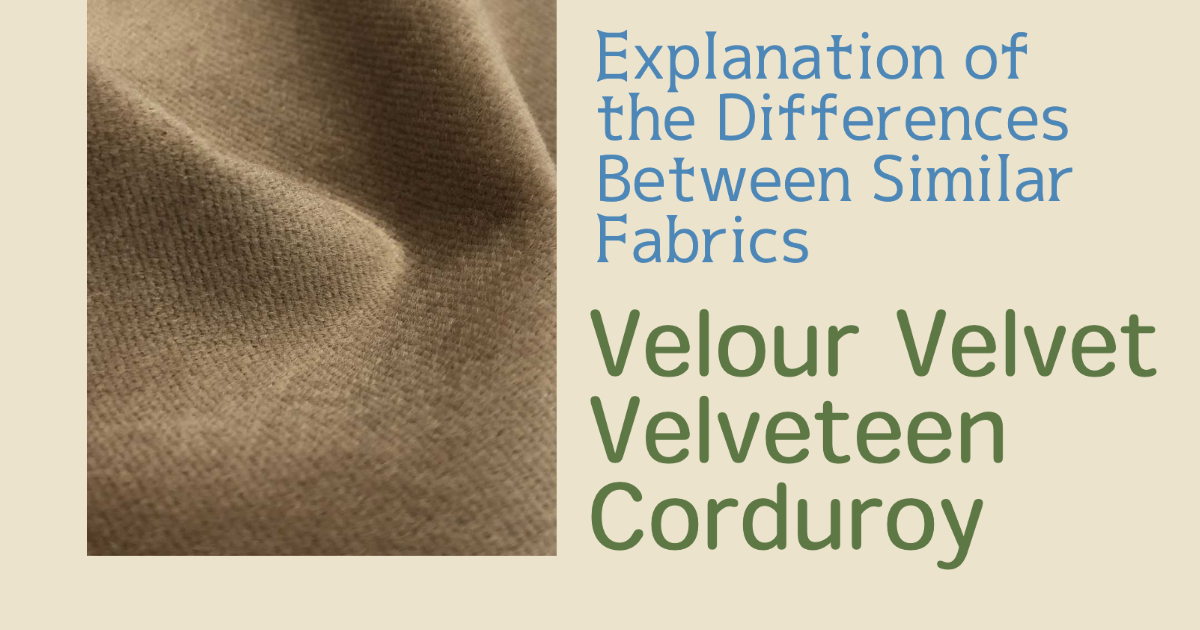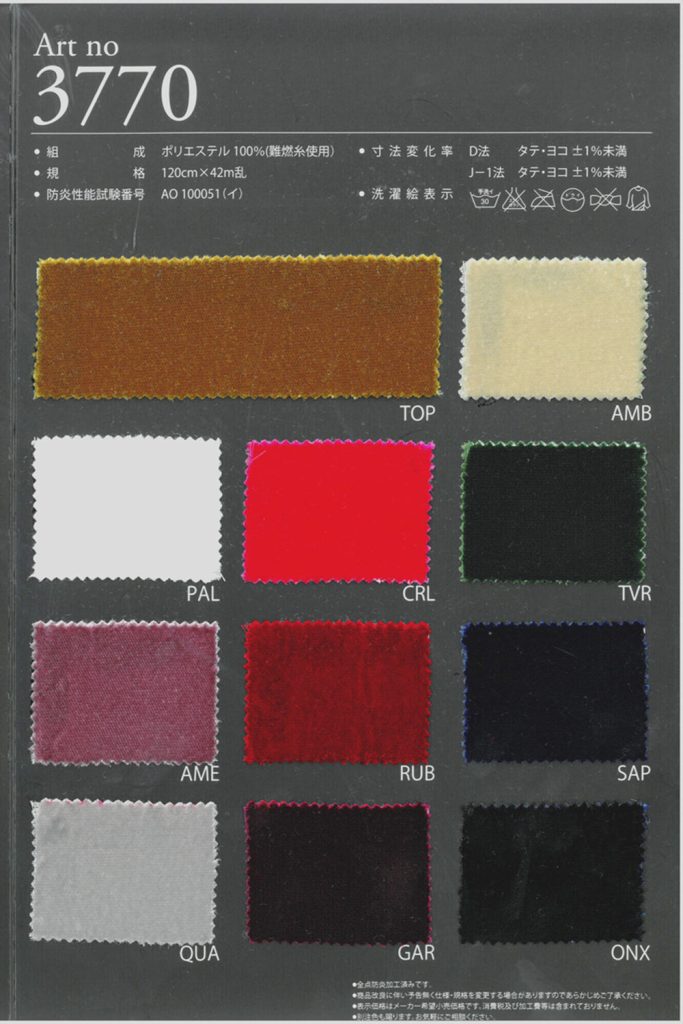Explanation of the differences between similar fabrics (velour, velvet, velveteen, corduroy)

Hello, This is Daisuke from ApparelX team.
When we think of winter fabrics, velvet, velour and velveteen come to mind.
But these fabrics look so similar that it’s hard to tell the difference, right?
Therefore, I would like to explain the differences between them.
These are all cut pile fabrics.
Pile fabrics are fabrics with loops of yarn, most easily seen in towels.
Cut pile fabrics are those in which the loops of the fabric are cut to create raised hair. Velvet, velour, and velveteen are all cut pile fabrics.
It has the disadvantage of being susceptible to friction, but it is soft to the touch.
Next, we will explain each fabric individually.
Velours
Velour is characterized by the fact that it is “knitted” fabrics.
It is stretchable.
In addition to clothing, it is often used for bags and hair accessories.
![7052 ベロアストレッチ[生地] VANCET](https://www.apparelx.jp/img/item/OKURA/1080253.jpg)
Velvet
Velvet is very similar to velour, but velvet is a “woven” fabric.
It is classified as a “warp pile weave” in which the warp threads are used to make the pile.
Originally made from silk threads, it is now made from rayon and cupra as well as silk.
Velvet is characterized by its thickness, softness, long raised hair, and elegant luster.
It is a delicate and difficult material to handle, as it is sensitive to moisture and the pile part can be crushed if left folded, but it has a luxurious feel, and if incorporated into formal clothing such as dresses, it will instantly become more prestigious.

![6270 片面ベルベットリボン[リボン・テープ・コード] ROSE BRAND(丸進)](https://www.apparelx.jp/img/item/OKURA/1008621.jpg)
Velveteen
Originally made of cotton to imitate velvet made of silk.
It is also made of polyester.
The difference from velvet is the weft pile weave, in which the pile is created by the weft yarns, and the raised hair is created by cutting the looped yarns.
The bristles are shorter and less shiny than velvet, but it is more durable than velvet and can be incorporated into casual fashion.
Ribbons and tapes can be used for hats, accessories, and other small items, as well as pretty ribbons for wrapping.
![6280 コットン 両面 別珍 リボン[リボン・テープ・コード] ROSE BRAND(丸進)](https://www.apparelx.jp/img/item/OKURA/1008633.jpg)
Corduroy
As with the separate fabric, this weave uses weft yarns to create a pile, but it is characterized by its warp ridges.
There are various widths of ridges, and the number of ridges in an inch is expressed in units of WALE.
Corduroy’s characteristic ridges help retain heat, making it perfect for fall and winter jackets and pants.
![SB11100 広巾11Wコール[生地] 柴屋](https://www.apparelx.jp/img/item/OKURA/1078214.jpg)
Summary
I have explained the similarities and differences between velvet, velveteen, and velour.
Velour: Knitting of pile fabric.
Velvet: “warp pile weave” in which the warp threads are used to make the pile.
Velveteen: The difference from velvet is the weft pile weave, in which the pile is created by the weft yarns, and the raised hair is created by cutting the looped yarns.
We hope you will be aware of the characteristics and place your order.

